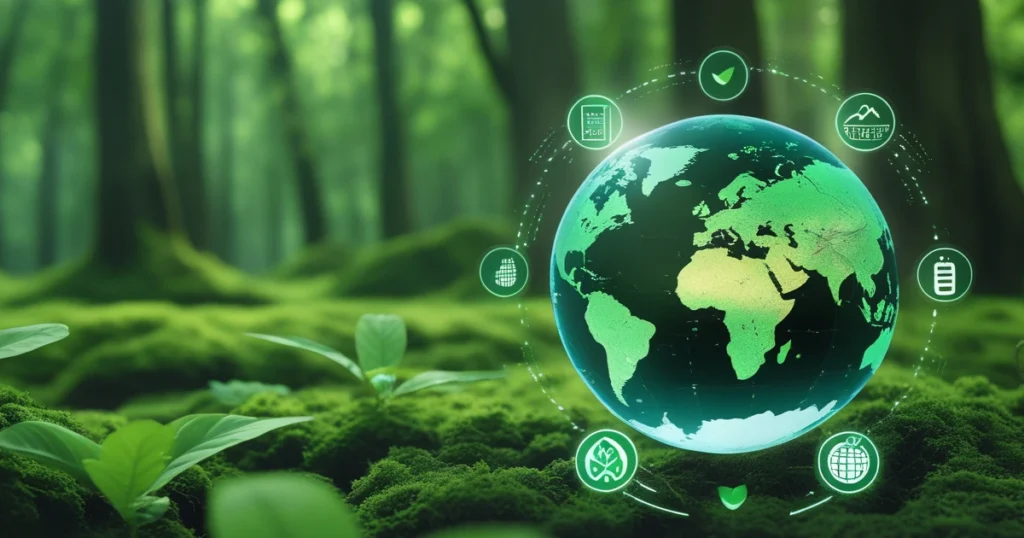Climate Tech Side Hustles: Profit from Carbon Credits, Green Tech, and Urban Farming
In recent years, the push for sustainable practices and reducing environmental footprints has created a booming market in climate tech. As the world faces increasingly urgent environmental challenges, there’s a growing interest in innovative technologies and practices that help reduce carbon emissions and preserve the planet’s resources. For individuals with an entrepreneurial spirit, these developments present a unique opportunity to start a side hustle that not only contributes to sustainability but also yields profit. Three sectors stand out for those looking to tap into the climate tech wave: carbon credits, green technology, and urban farming. This article will explore how you can leverage these areas to create a successful climate tech side hustle.
1. Carbon Credits: The Green Investment Opportunity
What are Carbon Credits?
Carbon credits are a fundamental part of the global effort to reduce greenhouse gas emissions. A carbon credit represents the reduction of one metric ton of carbon dioxide or its equivalent in other greenhouse gases. These credits are sold by businesses or organizations that reduce their emissions, either through technologies or initiatives that offset emissions. The idea is to create a market that incentivizes businesses to lower their carbon footprint, and in turn, they can sell their excess reductions to companies that exceed their emissions caps.
How Carbon Credits Work
Carbon credits are typically purchased by companies to offset their emissions when they cannot reduce them entirely. This is particularly relevant for industries such as aviation, oil and gas, and manufacturing. The credit market operates on the principle of supply and demand, and the price fluctuates based on the volume of credits available and the demand from companies looking to meet emissions targets.
The credit system also provides an opportunity for entrepreneurs to engage in a variety of activities related to carbon credits. This includes buying and selling credits, consulting for businesses on emissions tracking, and even starting businesses that generate carbon credits.
Side Hustle Opportunities in Carbon Credits
There are several ways you can get involved in the carbon credit market, even if you’re just starting out.
- Investing in Carbon Credits: Platforms like Nori and CarbonX offer opportunities for individuals to invest in carbon credits. By purchasing credits, individuals can offset their own carbon footprints, but they can also profit from the rising value of carbon credits as demand increases. It’s important to research the platforms carefully and understand the underlying projects generating the carbon credits.
- Becoming a Carbon Credit Broker: You can serve as an intermediary between companies that want to purchase carbon credits and those that can supply them. This role involves understanding both the regulatory landscape and the certification processes involved in generating carbon credits. You could partner with existing carbon offset providers or become part of larger carbon credit exchange networks.
- Carbon Auditing and Reporting: Many businesses need help measuring and tracking their carbon emissions. Offering auditing and reporting services is a lucrative option, as businesses need to ensure they are meeting both regulatory requirements and corporate social responsibility goals. You could get certified as a carbon auditor and provide this service to companies in your area or online.
Challenges and Profit Potential
The carbon credit market is still evolving, and there are challenges to be aware of. Issues like fluctuating credit prices, varying regulatory standards, and the complexity of generating valid carbon credits can pose risks. However, with the growing push for corporate sustainability and environmental responsibility, the market for carbon credits is likely to continue expanding, offering long-term potential for side hustles in this sector.

2. Green Tech: Innovation for a Sustainable Future
What is Green Tech?
Green technology (or “green tech”) encompasses innovations and solutions that aim to reduce environmental impact. This includes everything from renewable energy technologies to energy-efficient products and services that help minimize pollution and the depletion of natural resources. Green tech is at the forefront of the transition to a low-carbon economy, and it’s a field that is growing rapidly.
Types of Green Tech
There are several types of green tech that can serve as profitable side hustles, depending on your interests and expertise:
- Solar Energy: Solar panels, solar water heaters, and solar power solutions are in high demand as both homeowners and businesses seek to reduce their energy costs and carbon footprints. You could start a business installing solar panels or offer consulting services to guide individuals and businesses through the process of switching to solar energy.Where to Start:
- Platforms like EnergySage connect homeowners with solar energy solutions and installers.
- If you’re looking to partner with solar companies or become a solar installer, organizations like SEIA (Solar Energy Industries Association) provide valuable resources for getting started.
- Energy Storage: As more people adopt renewable energy sources like solar, the need for energy storage solutions grows. Battery systems like Tesla Powerwall allow homeowners to store excess energy for later use. A side hustle in energy storage could involve selling and installing these systems or providing maintenance services.Where to Start:
- Eco-Friendly Products: A wide range of eco-friendly products are hitting the market, from biodegradable packaging to energy-efficient appliances. You can launch an e-commerce business selling these products or create your own line of eco-friendly goods. The growing demand for sustainable living is a trend that shows no signs of slowing down.Where to Start:
- Platforms like Etsy are a great place to start selling sustainable goods, and if you want to create your own products, look for suppliers at EcoEnclose for packaging materials and Green America for eco-friendly product ideas.
Side Hustle Opportunities in Green Tech
- Solar Panel Installation: Starting a small solar installation business or partnering with established solar companies is a great way to tap into the growing demand for renewable energy. You can offer both residential and commercial solar installation services.
- Eco-Consulting: Many businesses are looking to become more sustainable, but they don’t know where to start. As an eco-consultant, you could offer services that help businesses adopt green technologies, optimize energy consumption, and reduce waste. A background in environmental science, energy efficiency, or engineering would be beneficial for this role.
- Green Apps and Software: Another green tech side hustle involves developing or reselling software solutions that help individuals and businesses track their energy use, set sustainability goals, or find eco-friendly products. With the rise of the Internet of Things (IoT) and smart homes, there’s an increasing demand for apps that help people live more sustainably.
Profitability and Market Outlook
The green tech industry is expected to continue its rapid growth. A report from Grand View Research forecasts that the global green tech market will reach $50 billion by 2027. Government incentives, subsidies, and growing consumer demand for sustainable solutions are key drivers behind this growth, offering excellent profit potential for side hustles in the green tech sector.

3. Urban Farming: Growing Green in the Concrete Jungle
What is Urban Farming?
Urban farming refers to the practice of cultivating food in urban environments. This can include vertical farming, hydroponics, aquaponics, and community gardens. As cities grow and arable land decreases, urban farming has emerged as a solution for producing fresh, local, and sustainable food in densely populated areas.
Types of Urban Farming
- Vertical Farming: Using vertical space to grow crops such as leafy greens and herbs, this method often involves hydroponic or aeroponic systems. Vertical farms can be located in warehouses, rooftops, or even abandoned buildings.
- Hydroponics and Aquaponics: These soil-free farming methods allow you to grow plants in water-based solutions, often with added fish to create a symbiotic ecosystem. These methods are efficient and space-saving, making them ideal for urban environments.
- Community Gardens: A more communal approach to urban farming, community gardens involve individuals or groups growing their own food in shared spaces. These gardens often serve as a means to enhance local food security and foster community engagement.
Side Hustle Opportunities in Urban Farming
- Selling Fresh Produce: Urban farming allows you to grow food locally and sell it at farmers’ markets, restaurants, or directly to consumers. In cities where access to fresh, organic produce may be limited, this can be a highly lucrative business. Where to Start:
- Hydroponic Systems: You can start a business by selling or setting up hydroponic and aquaponic systems for those interested in growing their own food at home. Where to Start:
- Hydrofarm is a well-known supplier for hydroponics and aquaponics systems that you can resell or use in your business.
- Urban Farming Education: Educating others about how to start urban farms or use hydroponic systems can be a highly profitable niche. Consider offering workshops, courses, or even online training programs for aspiring urban farmers.
Challenges and Rewards
While urban farming can be rewarding, there are challenges. The initial setup costs for systems like hydroponics or vertical farming can be high, and there’s a need for technical knowledge to maintain these systems effectively. However, as urban populations grow and demand for local, sustainable food increases, urban farming remains a promising side hustle with long-term benefits.
Conclusion
The growing field of climate tech offers incredible opportunities for side hustles, particularly in carbon credits, green tech, and urban farming. These sectors not only provide a chance to make a profit but also allow you to contribute positively to the environment and society. By taking advantage of platforms, resources, and new technologies in these areas, anyone with the passion and entrepreneurial spirit can start a successful side hustle that aligns with their values.
Whether you choose to invest in carbon credits, offer green tech solutions, or get involved in urban farming, the future is green—and so is the potential for profit.
for more visit Mavlluxury








